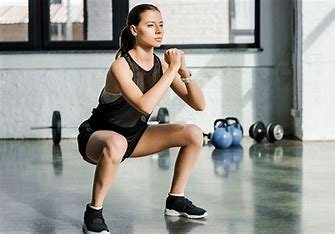
:
💪 The Importance of a Strong Core
The core refers to the muscles around the trunk and pelvis, including the abdominals, lower back, obliques, and hip muscles. These muscles work together to stabilize the spine, pelvis, and shoulders, enabling coordinated movement and providing a solid base for the rest of the body.
1. Posture Support
- The core muscles support the spine, helping maintain an upright posture and preventing slouching.
- A strong core allows the musculoskeletal system to work efficiently by distributing forces across the body and reducing strain on the spine.
- Maintaining proper posture prevents chronic back pain and reduces the risk of developing musculoskeletal imbalances.
2. Balance and Stability
- The core muscles act as a stabilizing foundation, ensuring that the body can balance in both static (standing still) and dynamic (moving) positions.
- For example, when you stand on one leg or perform a dynamic movement (like running or jumping), your core helps maintain equilibrium and prevent falling.
- Core stability is especially important in maintaining proper posture during functional movements, such as lifting, bending, or reaching.
3. Prevention of Falls
- Core strength is critical for balance and coordination. Without a strong core, it’s more difficult to react to sudden movements or recover from an unstable position.
- The muscles of the core help with quick adjustments to keep the body stable, preventing falls or injuries from losing balance.
- For older adults, a strong core is vital in reducing fall risk, as core weakness is a common contributor to instability and falls.
4. Improved Athletic Performance
- A strong core enhances athletic performance by providing a solid base for almost all sports and physical activities.
- It helps generate force and power in movements like running, jumping, and lifting. For instance, when sprinting or performing a quick change of direction, the core helps transfer force from the lower body to the upper body and vice versa.
- Rotational sports (like tennis, golf, and baseball) especially rely on a strong core, as it aids in generating power and controlling body movement through twisting or turning motions.
🏃♀️ How Core Strength Improves Coordination
Core strength directly impacts coordination in both athletic and everyday activities:
- Core stability helps control the body’s movements with precision and fluidity, as the muscles are well-trained to work together.
- During complex activities (such as sports), the ability to maintain proper posture and movement patterns reduces energy wastage and increases efficiency, leading to smoother, more controlled performance.
- For example, in weightlifting, a strong core helps with the proper execution of exercises, such as deadlifts or squats, by stabilizing the torso and protecting the spine.
🧘♂️ Core Exercises to Strengthen the Muscles
Here are some core exercises that target different muscles to improve posture, balance, and overall coordination:
🟢 Basic/Core Stabilization:
- Plank (forearm or side plank)
- Dead Bug (lying on your back, alternating arm and leg extension)
- Bridges (lying on your back, lifting hips towards the ceiling)
- Bird-Dog (from a tabletop position, extend opposite arm and leg)
🟡 Dynamic/Core Strength and Coordination:
- Russian Twists (seated, rotating the torso side to side)
- Leg Raises (lying on your back, lifting legs up and down)
- Mountain Climbers (in a plank position, alternating knees toward chest)
- Flutter Kicks (lying on your back, alternating kicking motion with straight legs)
🔴 Advanced/Core Stability and Power:
- Medicine Ball Slams (slam a ball onto the ground with power)
- Cable Woodchoppers (rotational movement with resistance)
- Kettlebell Swings (hinge at hips while swinging the kettlebell up)
- Turkish Get-Ups (slow, controlled movement from lying to standing)
🧠 Benefits of a Strong Core
- Injury Prevention: Prevents strain on the lower back and reduces risk of injuries.
- Functional Movement: Supports better mobility, strength, and flexibility for everyday activities.
- Confidence and Posture: Helps stand taller and move more gracefully.
- Better Athletic Performance: Enhances speed, agility, power, and endurance in sports.
🏅 Conclusion
A strong core is essential for more than just athletic performance—it’s vital for maintaining good posture, stability, and coordination in everyday movements. Whether you’re lifting groceries, running a marathon, or just standing on one leg, your core is at the heart of it all. A well-developed core leads to better balance, fewer injuries, and greater control over your body in both sports and daily life.
